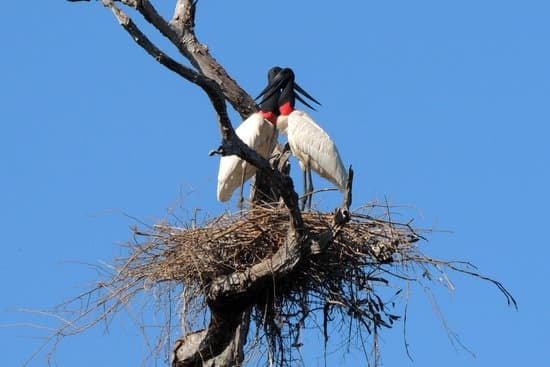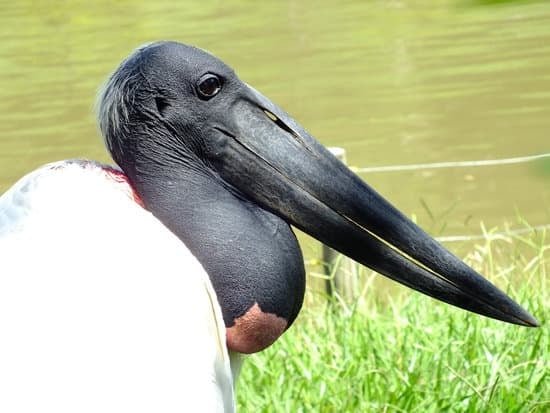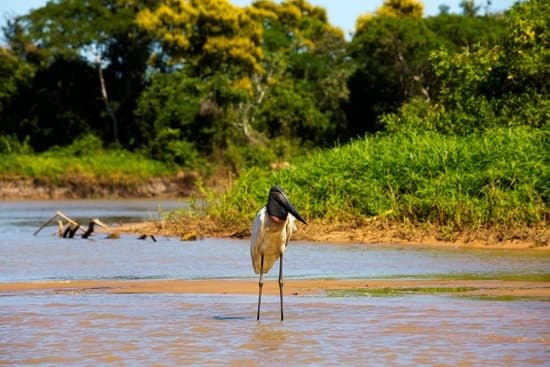Jabiru: Symbolizes the Pantanal: The jabiru (Jabiru mycteria), also known as the jaburu, is one of the most iconic and emblematic birds of the Pantanal, the largest floodplain in the world. Recognized for its impressive wingspan and distinctive plumage, the jabiru stands out not only for its size, but also for its symbolic and ecological importance in the region.

Physical Characteristics
The jabiru is a large bird, reaching up to 1.60 meters in height and with a wingspan of up to 2.80 meters. Its plumage is predominantly white, with the exception of the neck and head, which are black and devoid of feathers, giving the bird an even more imposing appearance. Its beak is long and robust, adapted to capture aquatic prey, such as fish, mollusks and small reptiles. A striking feature is the red stripe at the base of its neck, which contrasts with the black on its head and beak.
Habitat and Behavior
The tuiuiú is found mainly in humid areas, such as the marshes, swamps and riverbanks of the Pantanal, where it finds plenty of food. The bird is usually seen in pairs or small groups, especially in places with shallow water, where it uses its powerful beak to capture prey. It is a migratory species within South America, but in the Pantanal, tuiuiús are year-round residents, adapting well to the region’s cycle of floods and droughts.

Ecological Importance
As one of the largest birds in the region, the tuiuiú plays an important role in the ecological balance of the Pantanal. It helps control the populations of fish and other small prey, preventing imbalances in the ecosystem. Furthermore, as a top predator, the tuiuiú signals the environmental health of the Pantanal, indicating that the habitat remains preserved.
Symbolism and Culture
The tuiuiú is more than a bird; it is a symbol of the natural wealth and biodiversity of the Pantanal. Its image often represents environmental preservation and the cultural identity of the region. In the state of Mato Grosso do Sul, where the Pantanal covers much of the territory, people consider the tuiuiú a symbolic bird, reflecting the commitment to conserving this unique ecosystem.

Conservation
Although it still exists in considerable numbers in the Pantanal, the tuiuiú faces threats due to habitat destruction, mainly from deforestation and fires. The conservation of the Pantanal and its wetlands is crucial to guarantee the survival of this and other species that depend on this ecosystem. Conservation efforts, such as creating protected areas and combating uncontrolled fires, are essential to protecting the tuiuiú and the rich biodiversity of the Pantanal.
The tuiuiú, with its majestic presence, continues to be one of the most beautiful and significant symbols of the Pantanal, reminding everyone of the importance of preserving one of Brazil’s greatest natural treasures.





